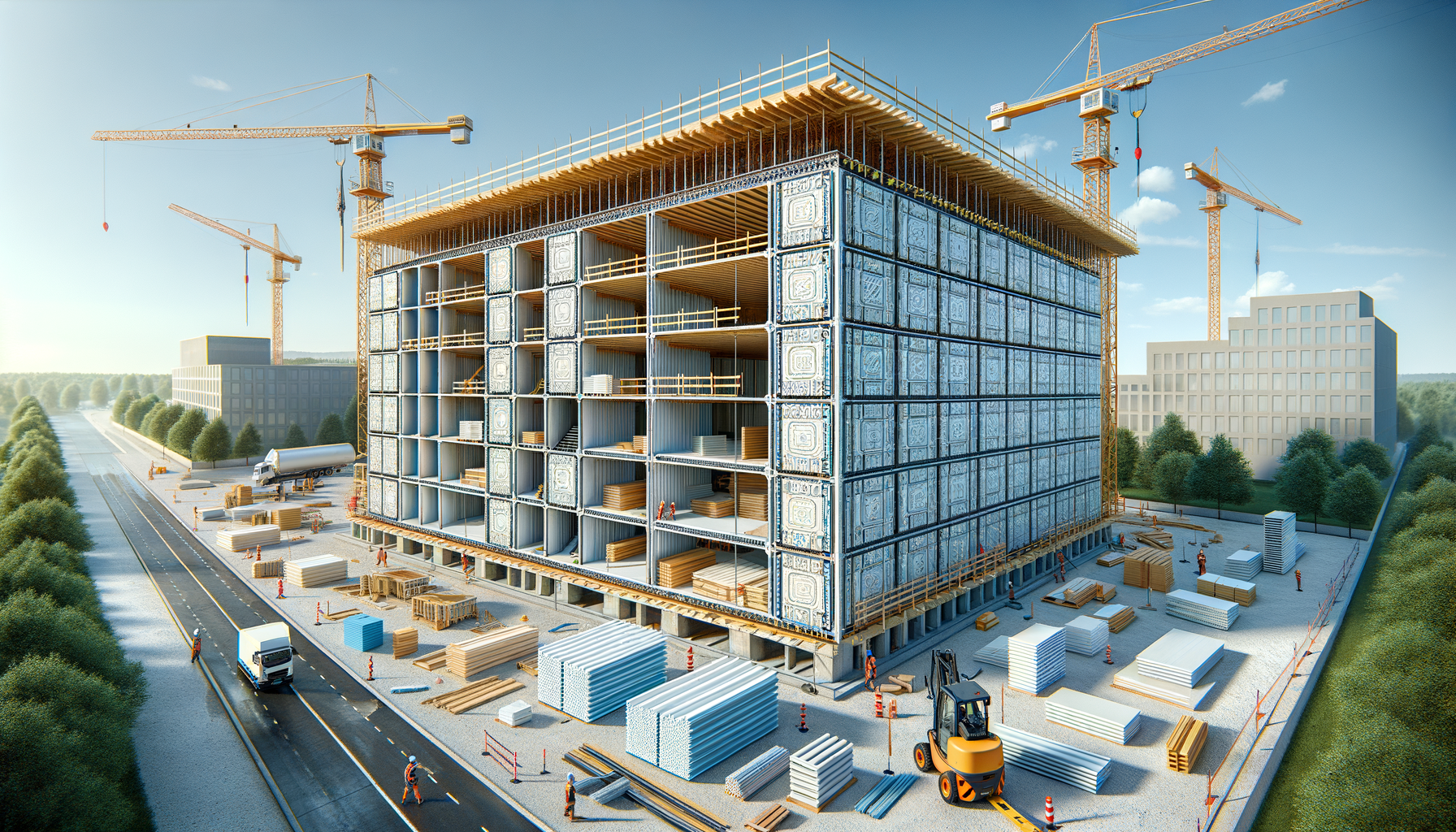
Elevate Your Construction with Remarkable Sandwich Panels
Understanding Sandwich Panels and Their Composition
Sandwich panels are a modern construction material that combines functionality and aesthetic appeal. These panels consist of three layers: a low-density core and two thin, high-density outer layers. The core typically comprises materials like polyurethane, polystyrene, or mineral wool, which provide insulation and reduce the panel’s overall weight. The outer layers are often made of metal, such as steel or aluminum, offering protection and structural support.
The unique design of sandwich panels allows them to deliver exceptional thermal insulation, making them a popular choice in energy-efficient construction. The materials used in these panels are carefully selected to ensure durability and environmental sustainability. For example, the use of recyclable metals and eco-friendly core materials aligns with the growing demand for sustainable building practices.
In addition to their insulating properties, sandwich panels offer excellent soundproofing capabilities. This makes them ideal for use in environments where noise reduction is crucial, such as in office buildings, schools, and hospitals. The versatility of sandwich panels means they can be used in a variety of applications, including walls, roofs, and facades, providing a seamless and contemporary look to any structure.
- Core materials: polyurethane, polystyrene, mineral wool
- Outer layers: steel, aluminum
- Applications: walls, roofs, facades
Energy Efficiency: A Key Advantage of Sandwich Panels
One of the standout features of sandwich panels is their ability to enhance energy efficiency in buildings. The insulating core significantly reduces heat transfer, maintaining a stable indoor temperature regardless of external weather conditions. This results in lower energy consumption for heating and cooling, leading to reduced utility bills and a smaller carbon footprint.
Studies have shown that buildings utilizing sandwich panels can achieve up to 30% energy savings compared to traditional construction methods. This is particularly beneficial in regions with extreme climates, where maintaining comfortable indoor conditions can be energy-intensive. The panels’ insulating properties also contribute to a more comfortable living or working environment, as they help to eliminate cold spots and drafts.
Furthermore, the energy efficiency of sandwich panels aligns with global efforts to combat climate change by reducing greenhouse gas emissions. By choosing energy-efficient materials, builders and developers can contribute to a more sustainable future while also meeting regulatory requirements for energy performance in buildings.
- Reduced heat transfer
- Up to 30% energy savings
- Contributes to climate change mitigation
Durability and Longevity in Construction
Durability is a crucial factor in construction materials, and sandwich panels excel in this regard. The combination of a robust core and protective outer layers provides exceptional resistance to environmental factors such as moisture, UV radiation, and temperature fluctuations. This ensures that structures remain intact and visually appealing for many years.
Sandwich panels are designed to withstand harsh weather conditions, making them suitable for use in a variety of climates. Their resistance to corrosion and chemical exposure further enhances their longevity, reducing the need for frequent maintenance and replacements. This not only saves time and money but also minimizes the environmental impact associated with material production and disposal.
Moreover, the lightweight nature of sandwich panels contributes to their durability. Lighter materials reduce the load on a building’s foundation and structure, minimizing the risk of damage over time. This aspect, combined with their strength and resilience, makes sandwich panels a reliable choice for modern construction projects.
- Resistance to moisture, UV radiation, and temperature fluctuations
- Corrosion and chemical exposure resistance
- Lightweight yet strong
Cost-Effectiveness and Installation Efficiency
In addition to their performance benefits, sandwich panels offer significant cost advantages. The manufacturing process of these panels is streamlined and efficient, resulting in lower production costs compared to traditional construction materials. This translates to more affordable pricing for builders and developers.
The installation process is another area where sandwich panels shine. Their lightweight design and modular nature allow for quick and easy installation, reducing labor costs and project timelines. This efficiency is particularly advantageous in large-scale projects where time and budget constraints are critical considerations.
Furthermore, the reduced need for additional insulation materials or structural reinforcements can lead to further cost savings. By opting for sandwich panels, construction projects can achieve a balance between quality, performance, and budget, making them an attractive option for a wide range of applications.
- Lower production and installation costs
- Quick and easy installation
- Reduced need for additional materials
Environmental Benefits and Sustainability
As the construction industry moves towards more sustainable practices, sandwich panels emerge as a leading choice for eco-friendly building solutions. The materials used in these panels are often recyclable, reducing waste and promoting a circular economy. Additionally, the energy efficiency of sandwich panels contributes to lower greenhouse gas emissions, aligning with global sustainability goals.
Moreover, the production of sandwich panels generates less waste and pollution compared to traditional construction materials. This is due to the precision manufacturing processes and the use of sustainable materials. By choosing sandwich panels, builders can reduce their environmental impact and contribute to the preservation of natural resources.
The versatility and adaptability of sandwich panels also support sustainable construction practices. They can be easily integrated into various architectural designs, allowing for innovative and efficient building solutions. As the demand for sustainable construction continues to grow, sandwich panels offer a viable path towards greener and more responsible building practices.
- Recyclable materials
- Lower greenhouse gas emissions
- Supports sustainable construction practices

